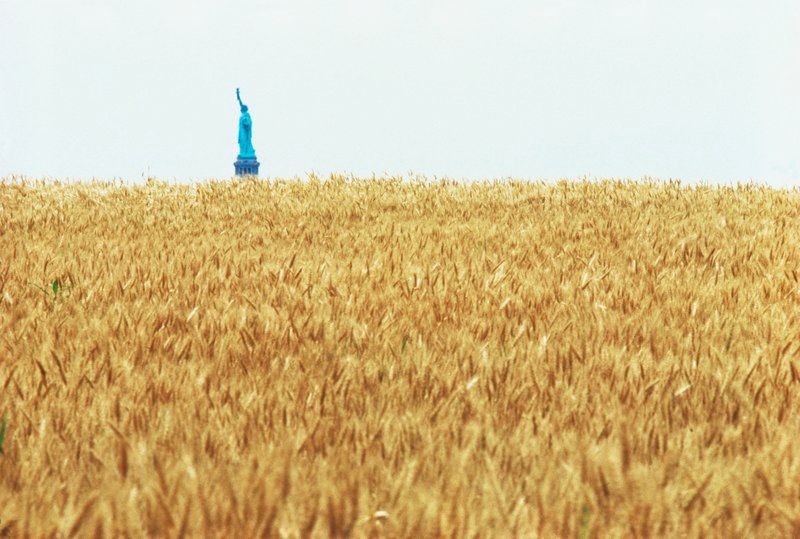The Berkshires Bowling Alley that Inspired "The Big Lebowski"
It’s been 36 years since the release of The Big Lebowski, the irreverent cult comedy by Joel and Ethan


In 1982, the artist Agnes Denes planted two acres of wheat on landfill that would become Battery Park City, a new outcropping on the Manhattan waterfront created as a result of excavation for the World Trade Center in the 1970s. You might also recall the indelible images of the Battery Park landfill used as a sandy beach during this time. But Denes’ Wheatfield — A Confrontation was particularly striking, especially looking at the photos today. The work called attention to the large-scale change to the city’s waterfront over the centuries and gave a glimpse of what could be possible, heralding the more ecological approaches since promulgated by projects like the BIG U/Dryline by Bjarke Ingels Group.
Denes’ work is now the subject of a retrospective, Agnes Denes: Absolutes and Intermediates, that will take over two of the galleries in The Shed at Hudson Yards from October 9, 2019 to January 19, 2020. It will be the first time that all her work will be shown together in New York City. “Agnes Denes not only anticipated the man-made destruction of natural habitats at a moment when few people were paying attention, but much of her work features solutions to ecological crises that we are now facing,” said Hans Ulrich Obrist, The Shed’s senior program advisor.

Photo courtesy the artist and Leslie Tonkonow Artworks + Projects.
Wheatfield — A Confrontation was sponsored by the Public Art Fund, the second work in its Urban Environmental Site Program, that sought to bring attention to the abandoned or empty places on New York CIty’s waterfront. Denes and her team hand-dug 285 furrows by hand, removing the rocks and garbage that had accumulated on the site, and then put the seeds into the furrows. The Public Art Fund says that each furrow took two to three hours to do, and after Denes and her team “Denes and her assistants maintained the field for four months, set up an irrigation system, weeded, put down fertilizers, cleared off rocks, boulders and wires by hand, and sprayed against mildew.” On August 16th, in the middle of installation, she “harvested the crop, yielding almost 1000 pounds of healthy, golden wheat.”
At the time, Denes described Wheatfield — A Confrontation as a “symbol, a universal concept. It represents food, energy, commerce, world trade, economics. It refers to mismanagement and world hunger. It is an intrusion into the Citadel, a confrontation of High Civilization. Then again, it is also Shangri-La, a small paradise, one’s childhood, a hot summer afternoon in the country, peace. Forgotten values, simple pleasures.” Emma Enderby, Senior Curator of The Shed, says today that “Agnes Denes was ahead of her time. She saw the coming of an ecological crisis, and in the 1960s started working with land, mathematics, philosophy, language, and technology to consider and offer solutions to the challenges facing humanity. She alerted us to humanitarian and environmental issues through beautiful, sensual visual forms combined with a deeply researched and scholarly philosophy. Her vision was radical, and in retrospect, terrifyingly prophetic.”
Indeed, with Mayor Bill de Blasio and other local politicians completely scrapping years of design work and community engagement on the Dryline, with new plans to replace it with a hard edge park, it appears that history indeed does repeat itself.
Next, check out the Top 10 Secrets of Battery Park.
Subscribe to our newsletter